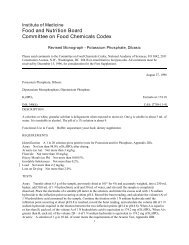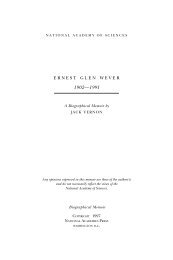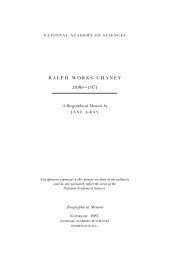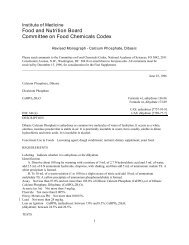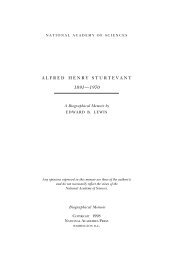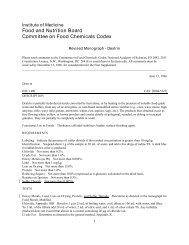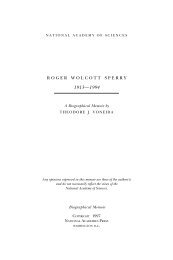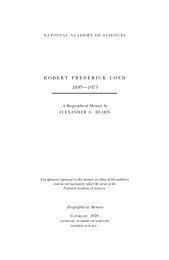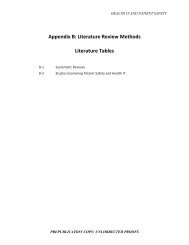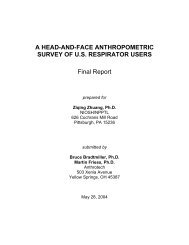LARS ONSAGER - The National Academies Press
LARS ONSAGER - The National Academies Press
LARS ONSAGER - The National Academies Press
Create successful ePaper yourself
Turn your PDF publications into a flip-book with our unique Google optimized e-Paper software.
<strong>LARS</strong> <strong>ONSAGER</strong> 189<br />
may seem strange that a man who could see so deeply into<br />
physical reality should have been so conspicuously lacking in<br />
imagination when it came to reading other minds, but almost<br />
everyone who met him became immediately aware of this<br />
disability.<br />
"I won't say he was the world's worst lecturer," Professor Cole continues,<br />
"but he was certainly in contention. He was difficult to understand anyway,<br />
but he also had the habit of lecturing when his back was to the students<br />
and he was writing on the blackboard. To compound matters, he was a big<br />
man, and students had to peer round him just to try and see what was<br />
being written."<br />
Onsager's problems in communicating with lesser mortals<br />
were certainly not due to impatience or arrogance. <strong>The</strong> theoretical<br />
chemist Julian Gibbs, of Brown University, who got to<br />
know him some years later describes Onsager as a "very, very<br />
friendly man" who would always assume that his listeners<br />
were as advanced in their thinking as he was. "He assumed<br />
that if he knew it, others in the field automatically knew it,"<br />
whatever the subject under discussion.<br />
Yet it was not only students who found Onsager difficult<br />
to understand; his colleagues had the same difficulty. Oliver<br />
Penrose, who worked with him as a postdoctoral associate,<br />
recalls a lecture to the Kapitza Club in Cambridge, many<br />
years later, at which Onsager was explaining his joint work<br />
with Bruria Kaufman on the Ising lattice. He had been<br />
warned that non-theoreticians would be present and that he<br />
should phrase his talk in not too technical language. He<br />
plunged, nevertheless, into the mathematics of spinor algebras.<br />
After about twenty minutes, one of the many experimentalists<br />
in the audience had the courage to ask him what<br />
a spinor was. Onsager replied, thoughtfully: "A spinor—no,<br />
a set of spinors—is a set of matrices isomorphic to the orthogonal<br />
group." With that he gave the famous Onsager grin,



